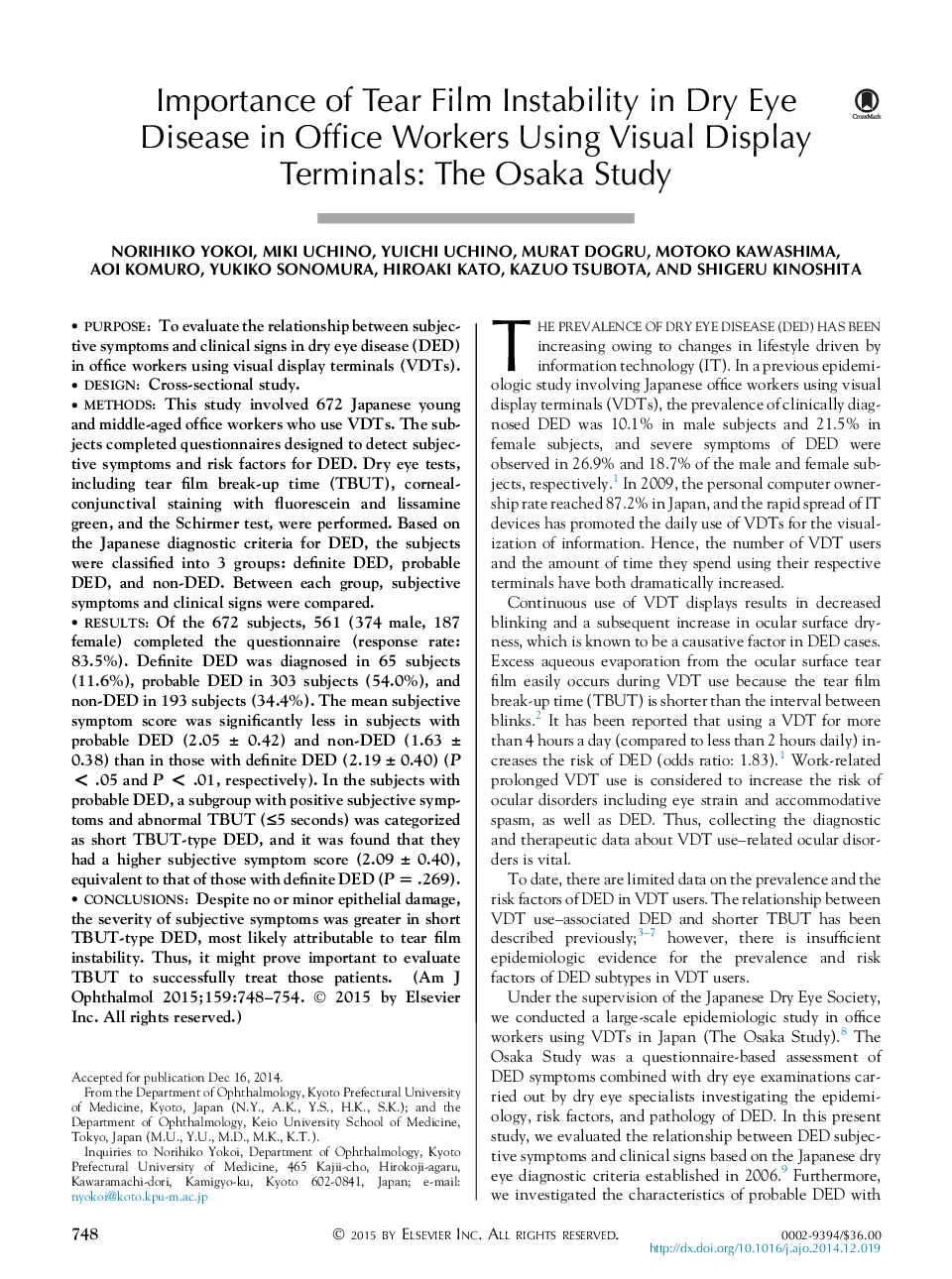| Article ID | Journal | Published Year | Pages | File Type |
|---|---|---|---|---|
| 4002055 | American Journal of Ophthalmology | 2015 | 7 Pages |
PurposeTo evaluate the relationship between subjective symptoms and clinical signs in dry eye disease (DED) in office workers using visual display terminals (VDTs).DesignCross-sectional study.MethodsThis study involved 672 Japanese young and middle-aged office workers who use VDTs. The subjects completed questionnaires designed to detect subjective symptoms and risk factors for DED. Dry eye tests, including tear film break-up time (TBUT), corneal-conjunctival staining with fluorescein and lissamine green, and the Schirmer test, were performed. Based on the Japanese diagnostic criteria for DED, the subjects were classified into 3 groups: definite DED, probable DED, and non-DED. Between each group, subjective symptoms and clinical signs were compared.ResultsOf the 672 subjects, 561 (374 male, 187 female) completed the questionnaire (response rate: 83.5%). Definite DED was diagnosed in 65 subjects (11.6%), probable DED in 303 subjects (54.0%), and non-DED in 193 subjects (34.4%). The mean subjective symptom score was significantly less in subjects with probable DED (2.05 ± 0.42) and non-DED (1.63 ± 0.38) than in those with definite DED (2.19 ± 0.40) (P < .05 and P < .01, respectively). In the subjects with probable DED, a subgroup with positive subjective symptoms and abnormal TBUT (≤5 seconds) was categorized as short TBUT-type DED, and it was found that they had a higher subjective symptom score (2.09 ± 0.40), equivalent to that of those with definite DED (P = .269).ConclusionsDespite no or minor epithelial damage, the severity of subjective symptoms was greater in short TBUT-type DED, most likely attributable to tear film instability. Thus, it might prove important to evaluate TBUT to successfully treat those patients.
